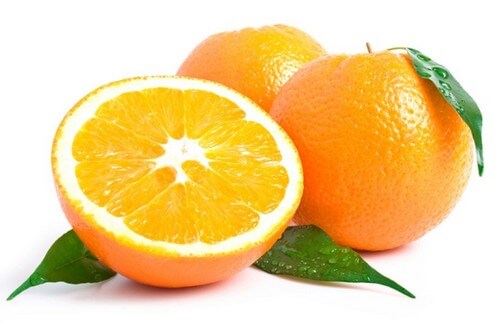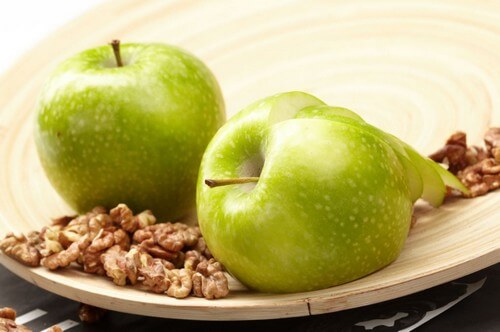How Pectin Affects Exercise
You’ve probably heard of pectin and may wonder what it is. Do you know how pectin affects exercise? Simply put, it’s a substance that’s crucial for your body. However, that’s true whether or not you exercise. Find out more about how pectin affects exercise in the article below.
How pectin affects exercise: what you need to know
Pectin is very beneficial to your health. You can find it in any fruit–mainly in apples, oranges, and grapes. You can also find it in vegetables such as carrots.
What’s more, it’s a type of fiber since it has similar functions. While it doesn’t provide you with any particular nutrient, it helps to eliminate toxins and waste from your body. As such, pectin is a great ally for your body to stay in top shape.
Another benefit is that it helps eliminate bad cholesterol by absorbing the liver and gallbladder secretions that both organs make during digestion. In addition, pectin also offers the following benefits:
1. Pectin affects exercise because it helps with weight loss
Since it plays a role in absorbing sugar and fat, it’s common to include pectin-rich foods in a weight loss diet.
2. Helps you feel full
Similar to the previous point, if you eat fruits and vegetables containing pectin, you’ll feel fuller for longer. That’s perfect for avoiding foods you might crave between meals.
3. Controls blood pressure
Not only can pectin help reduce cholesterol, but the polysaccharide can also increase the excretion of bile. In other words, it helps to reduce blood pressure. As such, health professionals recommend it for people with hypertension.

4. Regulates your bowel movements
If you’ve had issues with diarrhea or constipation, you should eat more fruit with pectin. This is because it will help move things along and regulate your bowel movements.
Can everyone take large doses of pectin? The recommended daily amount is 15 grams (for adults). Children, pregnant women, and those with hypersensitivity or allergies shouldn’t take more.
How pectin affects exercise: sources
Fruits are great for those who exercise and that’s nothing new. They’re also beneficial for those who want to lose weight or reduce their cholesterol. Apples, one of the healthiest fruits, contains a sizable amount of pectin.
This fiber is necessary for elite and amateur athletes since it boosts their performance during training and competitions. That’s why coaches advise them to eat certain fruits before their sessions, especially anaerobic ones. In other words, activities that involve weight lifting.
Pectin acts as a great natural energizer that can help you to give it your all in a cardio or aerobics class. Often, you might not have enough energy to complete the exercises and be puzzled as to why. Indeed, it might be because you’re not getting enough pectin!
While it makes you feel full, the truth is that it won’t make you feel heavy or prevent you from exercising. So, your stomach will be busy digesting but it’ll be light compared to when you eat a lot.
How pectin affects exercise and the relationship between pectin and training
Taking advantage of this substance is as simple as eating an apple (alone or in a shake) one hour before training. We recommend that you eat organic apples since they often have more pesticides and chemicals than other fruits.
Read more about: How to Make The Best Post-Workout Shake

Believe it or not, a simple (unpeeled) apple will give you the energy you need to complete your whole routine. Also, when you finish working out, you won’t be so hungry that you’ll eat the first thing you can get your hands on.
For a while, the pectin you ate will be redirecting sugars and preventing them from metabolizing and increasing body fat.
Lastly, pectin affects exercise but it also impacts your muscles. As such, if your goal is to gain muscle mass, you’ll need to include it in your diet. Add it to shakes and meals before and after your sessions and you’ll soon see results.
You’ve probably heard of pectin and may wonder what it is. Do you know how pectin affects exercise? Simply put, it’s a substance that’s crucial for your body. However, that’s true whether or not you exercise. Find out more about how pectin affects exercise in the article below.
How pectin affects exercise: what you need to know
Pectin is very beneficial to your health. You can find it in any fruit–mainly in apples, oranges, and grapes. You can also find it in vegetables such as carrots.
What’s more, it’s a type of fiber since it has similar functions. While it doesn’t provide you with any particular nutrient, it helps to eliminate toxins and waste from your body. As such, pectin is a great ally for your body to stay in top shape.
Another benefit is that it helps eliminate bad cholesterol by absorbing the liver and gallbladder secretions that both organs make during digestion. In addition, pectin also offers the following benefits:
1. Pectin affects exercise because it helps with weight loss
Since it plays a role in absorbing sugar and fat, it’s common to include pectin-rich foods in a weight loss diet.
2. Helps you feel full
Similar to the previous point, if you eat fruits and vegetables containing pectin, you’ll feel fuller for longer. That’s perfect for avoiding foods you might crave between meals.
3. Controls blood pressure
Not only can pectin help reduce cholesterol, but the polysaccharide can also increase the excretion of bile. In other words, it helps to reduce blood pressure. As such, health professionals recommend it for people with hypertension.

4. Regulates your bowel movements
If you’ve had issues with diarrhea or constipation, you should eat more fruit with pectin. This is because it will help move things along and regulate your bowel movements.
Can everyone take large doses of pectin? The recommended daily amount is 15 grams (for adults). Children, pregnant women, and those with hypersensitivity or allergies shouldn’t take more.
How pectin affects exercise: sources
Fruits are great for those who exercise and that’s nothing new. They’re also beneficial for those who want to lose weight or reduce their cholesterol. Apples, one of the healthiest fruits, contains a sizable amount of pectin.
This fiber is necessary for elite and amateur athletes since it boosts their performance during training and competitions. That’s why coaches advise them to eat certain fruits before their sessions, especially anaerobic ones. In other words, activities that involve weight lifting.
Pectin acts as a great natural energizer that can help you to give it your all in a cardio or aerobics class. Often, you might not have enough energy to complete the exercises and be puzzled as to why. Indeed, it might be because you’re not getting enough pectin!
While it makes you feel full, the truth is that it won’t make you feel heavy or prevent you from exercising. So, your stomach will be busy digesting but it’ll be light compared to when you eat a lot.
How pectin affects exercise and the relationship between pectin and training
Taking advantage of this substance is as simple as eating an apple (alone or in a shake) one hour before training. We recommend that you eat organic apples since they often have more pesticides and chemicals than other fruits.
Read more about: How to Make The Best Post-Workout Shake

Believe it or not, a simple (unpeeled) apple will give you the energy you need to complete your whole routine. Also, when you finish working out, you won’t be so hungry that you’ll eat the first thing you can get your hands on.
For a while, the pectin you ate will be redirecting sugars and preventing them from metabolizing and increasing body fat.
Lastly, pectin affects exercise but it also impacts your muscles. As such, if your goal is to gain muscle mass, you’ll need to include it in your diet. Add it to shakes and meals before and after your sessions and you’ll soon see results.
All cited sources were thoroughly reviewed by our team to ensure their quality, reliability, currency, and validity. The bibliography of this article was considered reliable and of academic or scientific accuracy.
- Mamani Crispin, P. L., Ruiz Caro, R., & Veiga, M. D. (2012). Pectina: Usos farmaceúticos y aplicaciones terapéuticas. Anales de La Real Academia Nacional de Farmacia.
This text is provided for informational purposes only and does not replace consultation with a professional. If in doubt, consult your specialist.








